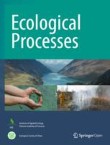Pathways towards the integration of periurban agrarian ecosystems into the spatial planning system
The potential of periurban agrarian ecosystems is recognized as one of the cornerstones for improving urban sustainability; however, this potential has been disregarded in spatial planning and decision making....
